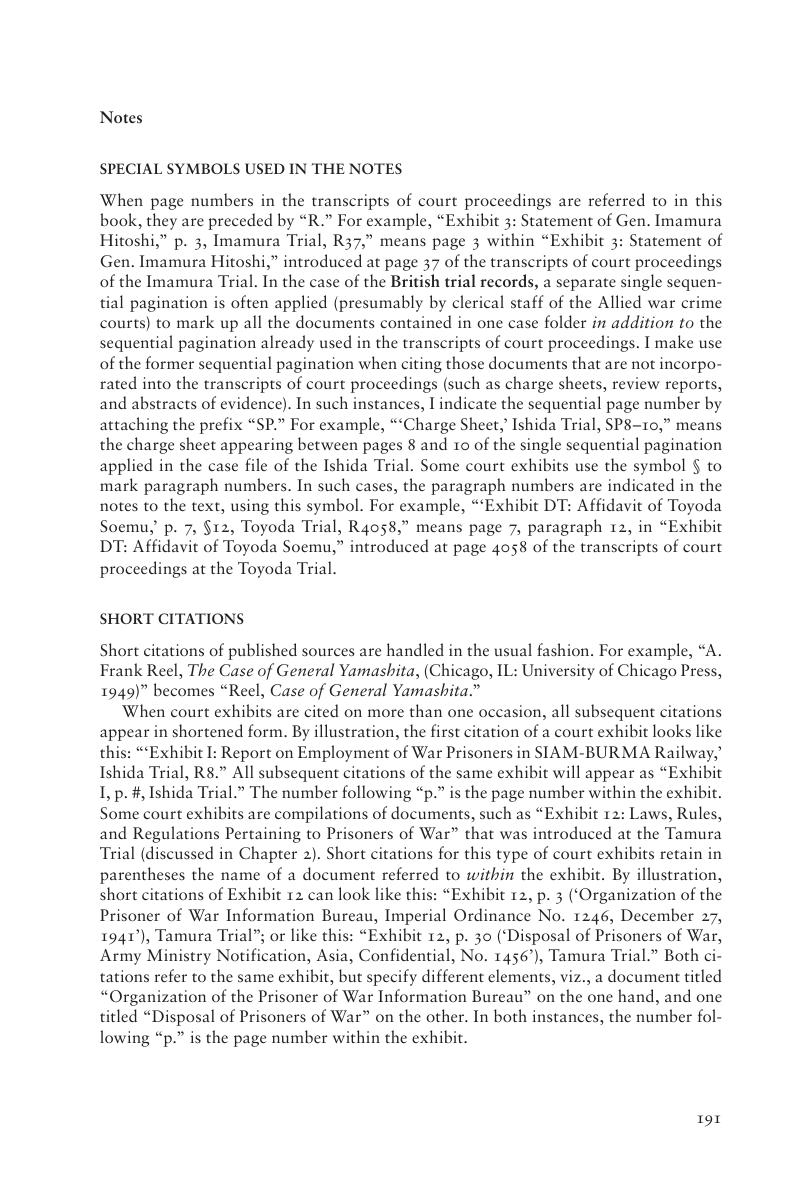Book contents
Notes
Published online by Cambridge University Press: 05 February 2015
Summary

- Type
- Chapter
- Information
- Justice in Asia and the Pacific Region, 1945–1952Allied War Crimes Prosecutions, pp. 191 - 250Publisher: Cambridge University PressPrint publication year: 2015



